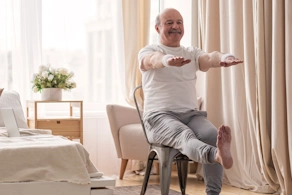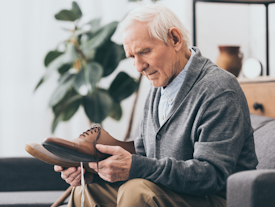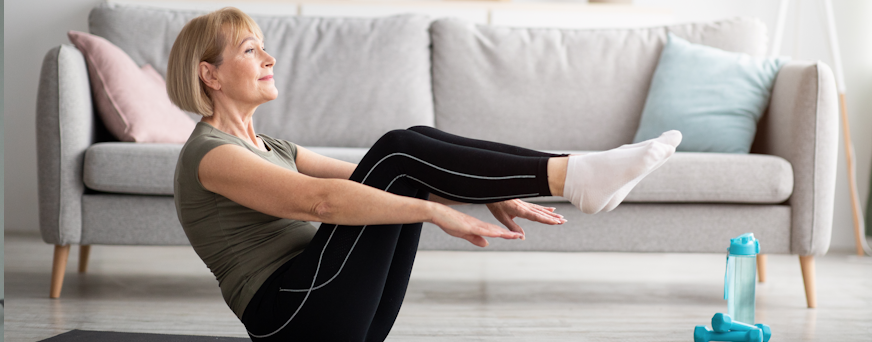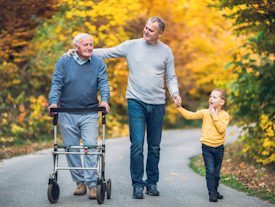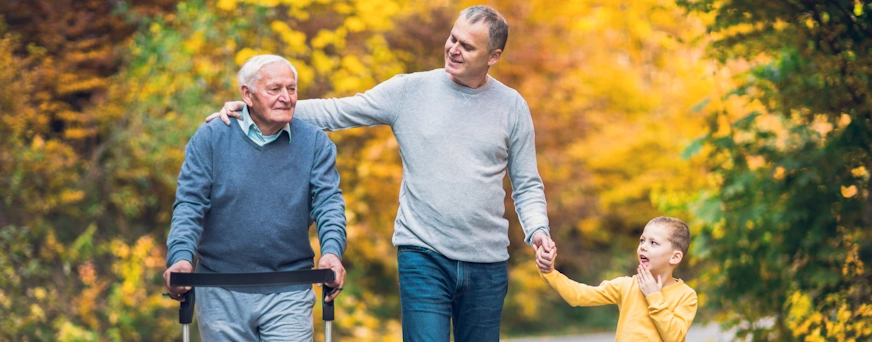Daily Routine: Best Mobility Exercises for Seniors to Stay Independent
As you get older, getting groceries in or out of your cupboard feels harder. Reaching high shelves, standing from a car, or tying boots can also strain your body. This is where you need to undergo exercise for a few minutes daily, right at home.
Staying active is crucial for independence as you age across Canada. A simple flexibility routine will keep you agile, prevent injuries, and reduce stiffness. Regular stretching preserves mobility, making tasks easier, safer, and boosting control and confidence in your aging years.
So, today, you’ll learn about the best mobility exercises for seniors to help them live a lasting, independent, and fulfilled life.
Life Assure Product Quiz
Find The Perfect Medical Alert Device
Take our 30 second quiz and discover
which Life Assure medical alert device
is the right fit for you or a loved one.
Life Assure Product Quiz
Find The Perfect Medical Alert Device
Take our 30 second quiz and discover
which Life Assure medical alert device
is the right fit for you or a loved one.
Top 5 Mobility Exercises for the Elderly to Stay Independent and Healthy
The following are simple, Canada-friendly moves to keep daily life for seniors steady and free.
Standing Marches
Stand tall beside a sturdy chair or kitchen counter for support. Lift one knee toward hip height, lower it, then switch sides with rhythm. Keep your chest up, shoulders soft, and eyes forward. Start slow, then build a smooth march for sixty to ninety seconds.
Breathe easily, and let your arms swing naturally for balance and warmth. This move wakes up your aging hips, core, and ankles. It also trains your walking pattern for safer steps on slushy sidewalks.
In addition, it raises heart rate gently without a harsh impact on your joints. Independence grows here because stronger hips and steadier steps mean confident errands for seniors. So, you’ll be able to climb bus stairs, carry light groceries, and cross the curb with less worry.
Arm Circles
Stand or sit tall with feet planted and ribs relaxed, whichever way you prefer. Reach both arms out to the sides like a letter T with your palms down.
Draw small circles forward for twenty slow counts and then reverse the direction. Make the circles bigger only if the shoulders stay happy and smooth. Keep the neck long and the jaw easy, kind of soft and calm.
This simple pattern smoothens stiff, aging shoulder joints in the elderly. It also strengthens postural muscles that hold you upright on winter walks.
Reaching high shelves, pulling on a parka, and buckling a seatbelt are now easier for seniors. In addition, better shoulder motion helps with bathing, hair care, and lifting light bags.
Hip Hinge
Stand with feet hip-width apart and knees soft, toes pointing straight ahead. Place one hand on your low ribs and one on your tailbone for feedback. Push your hips back like aiming for a chair, keeping your spine long and neutral.
Chest tips forward slightly while your shins stay nearly vertical over your boots. Move only as far as your hamstrings allow without rounding your back. Then drive through your heels and stand tall, squeezing your glutes at the top.
Use a countertop, walker, or broomstick along your back to guide the line. This pattern teaches safe bending for laundry baskets, recycling bins, and grocery bags. It also protects your aging back while shovelling light snow or loading the car trunk.
Independence thrives when you can pick things up without fear of a sharp twinge. In addition, stronger hips reduce strain on knees during stairs at the arena or mall.
Start with two sets of eight slow reps, resting as needed between sets. On the other hand, skip weights until the motion feels smooth and pain-free.
Toe Taps (Seated)
Sit near the front of a sturdy chair with your back tall and proud. Plant your heels, then lift your toes toward your shins and tap them down. Alternate feet like a quiet drum, or lift both toes together for a challenge.
Keep breathing, shoulders relaxed, and hands resting lightly on your thighs. Add gentle heel raises after thirty seconds to pump blood through the calves. This simple combination eases ankle stiffness from thick socks and winter boots.
It also improves dorsiflexion for safer steps in elderly people. Better ankle motion means quicker reactions if a foot slips on packed snow. In addition, the calf pump helps reduce swelling after long drives on the Highway
Toe taps support independence because nimble ankles steady every stride you take. You move with more control while boarding buses or stepping into a sedan.
Tai Chi
Stand in a clear space with shoes off or grippy socks for feel. Bend your aging knees slightly, soften the hips, and lengthen the spine upward. Begin with easy weight shifts side to side and breathing slow and quiet. Float your arms as if moving through warm water on a calm lake.
Try “Parting the Wild Horse’s Mane” with gentle steps and open hands. Or practice “Wave Hands Like Clouds,” sliding sideways with smooth arm circles. Tai Chi blends balance, focus, and breath into one kind practice.
It also trains the elderly ankle, knee, and hip control without strain, which helps prevent falls. In addition, the rhythm soothes the mind during long, dark winter evenings. Senior community centres from Victoria to St. John’s often host beginner Tai Chi groups.
Fifteen minutes daily supports steady feet, relaxed shoulders, and confident walking. On the other hand, shorter five-minute bouts still count on busy days.
Daily Mobility Exercise Routine for Seniors
Here’s a friendly plan older adults can follow at home, apartment, or condo. Keep a chair nearby for safety, and wear supportive shoes, however simple.
●Warm-up, 2 minutes: Easy hallway stroll or indoor march to raise gentle heat.
●Standing Marches, 1–2 minutes: Smooth rhythm, light arm swing, steady breathing for balance.
●Arm Circles, 60 seconds each way: Small to medium circles, seated or standing, shoulders relaxed.
●Hip Hinge, 2 sets of 8–10 reps: Hips back, long spine, pause, then stand tall with control.
●Toe Taps, 60–90 seconds: Add heel raises for circulation; ankles stay lively and quick.
●Tai Chi, 5–10 minutes: Slow weight shifts, gentle steps, floating arms, smooth, quiet breath.
Repeat the whole flow once if energy feels good that day. Also, sprinkle mini sets after walks, transit rides, or grocery runs for extra practice.
Conclusion
With these best mobility exercises for seniors, you finish each day knowing your routine kept you steady and strong. They make stairs, groceries, and car rides safer, easier, and smoother.
So, follow your routine, adjust as needed, and stay proudly independent across Canada.



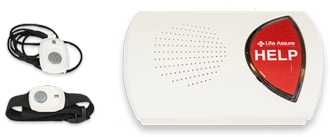


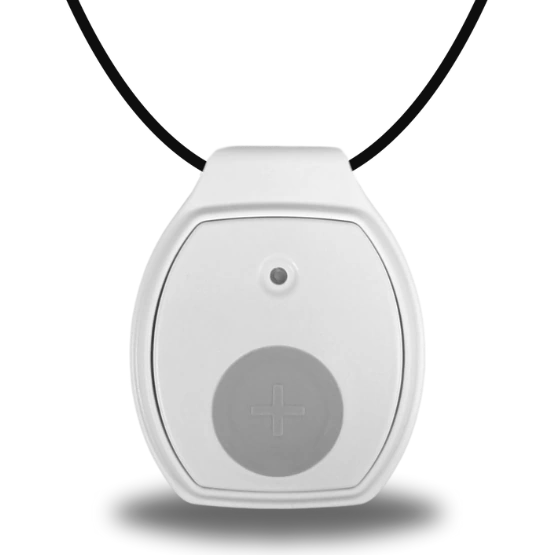


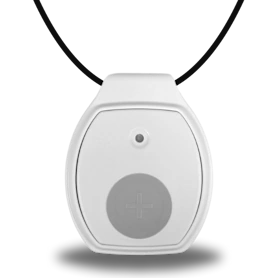

 Get Help With The Push Of
A Button
Get Help With The Push Of
A Button

